PHOENICIANS AND MOORS
Like Egyptians, the Phoenician seafarers and Islamic Moors are also frequently claimed by Afrocentrists, because both groups established colonies in North Africa and presumably intermarried with the indigenous populations. However, they were originally of Semitic origin, coming from the Middle East, and their forays into Africa seem not to have altered their racial character.
Anthropology
PHOENICIANS
"The physical type of the Phoenicians is well known from the skeletal remains found in tombs at Carthage. A series of 117 skulls, of which 68 are male, belong for the most part to one characteristic type; dolicho- to mesocephalic, with the cranial index at 75; fairly long vaulted, and hence moderately broad; with a very low vault, a moderately broad forehead, a short face, high orbits, and a narrow, projecting nose which often springs directly from the frontal bone with little or no nasion depression. These skulls are in many ways similar to the [Western European] Megalithic or Long Barrow type of the preceding millennium; but, as is to be expected in view of their late eastern Mediterranean origin, show modifications toward a shortening and widening of the vault, and a beaking of the nose."MOORS
"In one sense the word 'Moor' means the Mohammedan Berbers and Arabs of north-western Africa, with some Syrians, who conquered most of Spain in the eighth century and dominated the country for hundreds of years, leaving behind some magnificent examples of their architecture as a lasting memorial of their presence. These so-called 'Moors' were far in advance of any of the peoples of northern Europe at that time, not only in architecture but also in literature, science, technology, industry, and agriculture; and their civilization had a permanent influence on Spain. They were Europids, unhybridized with members of any other race. The Berbers were (and are) Mediterranids, probably with some admixture from the Cromagnid subrace of ancient times. The Arabs were Orientalids, the Syrians probably of mixed Orientalid and Armenoid stock. The skin of Orientalids and of some Berbers darkens readily under the influence of sunlight, and many of them become quite dark in the exposed parts of the body. The association of dark skin with the name of 'Moors' resulted eventually in the same term being applied to Negrids."* * *
"The racial character of the richer, city-dwelling Moors of Andalusia, before the time of their expulsion, may be suggested by a study of the almost wholly unmixed descendants of these emigres in Morocco. In the city of Sheshawen the old, aristocratic families are descended from the former aristocrats of Granada, and have lived endogamously since 1492. A little Riffian blood has crept in, but aside from that the Sheshawen families remain an island of Andalusian Moors on Moroccan soil.
"A small, homogeneous sample of these people shows a much closer relationship with Spain than with Morocco. They are a little longer-headed (194.5 mm.), a little more dolichocephalic (C.I. = 76.5) and a little longer-faced (123 mm.) than the Christian Andalusians; the bigonial diameter of 103 mm., although wide for Spain as a whole, is of Andalusian size. The Sheshawen Moors have predominantly dark brown hair and dark brown eyes, with brunet-white skin color. In facial morphology, they are fully Andalusian. The implication is that the Moors in Spain took more from the population of the peninsula, in a racial sense, than they gave."
Racial TypesCarthaginian general Hannibal and his father Hamilcar Barca, depicted in statuary and coinage of the time:
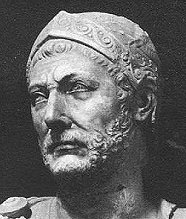
|
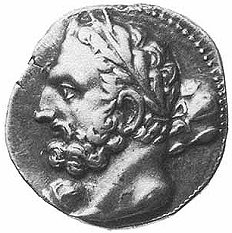
|
* * *
Illustrations from the Tale of Bayad and Riyad, Islamic Spain, early 13th century:
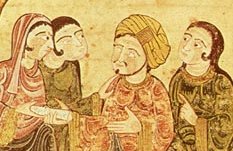
|
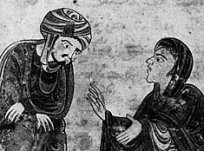
|
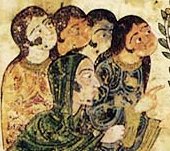
|
Related Topics
North Africans: Genetic data showing the peoples of North Africa to be predominantly Caucasoid.
The Racial Fuss Surrounding the Moors: Information and images on the racial type of the Moors.
